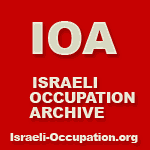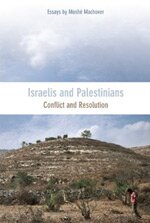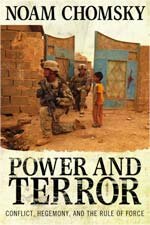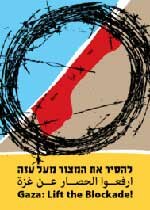By the Campaign for Peace and Democracy – October 2009
Visit website to read more, see list of endorsers, and add your name:
http://www.cpdweb.org/stmts/1014/stmt.shtml
We Call for the United States to End Its Wars in Afghanistan and Pakistan!
A Statement from the Campaign for Peace and Democracy
October, 2009
This may be a turning point for the expanding U.S./NATO wars in Afghanistan and Pakistan, a time when speaking out clearly and unambiguously against war can make a crucial difference. Today we see signs all too reminiscent of the step-by-step deepening of the U.S. commitment to the war in Vietnam in the 1960’s. In response, we declare ourselves firmly against military escalation in the region and for the withdrawal of all U.S. and NATO forces from Afghanistan and Pakistan now. We also call for an end to drone attacks in both countries.
There are currently 108,000 U.S./ NATO troops in Afghanistan. President Obama has authorized increasing U.S. forces by 21,000, which will mean more than 68,000 U.S. troops by the end of 2009. In view of the war’s growing unpopularity, Obama may very well abandon troop escalation. Reportedly, some in the Administration even recommended reducing U.S. forces and focusing more on strikes against Al Qaeda in Afghanistan and Pakistan. But even a scaled-back military presence constitutes an illegitimate occupation, one that wreaks havoc on the lives of innocent civilians and can only strengthen the Taliban and terrorist networks such as Al Qaeda.
Americans are increasingly disillusioned with the war. According to an August CNN poll, 57 percent oppose the Afghan war, a 9 percent increase since May, and there is growing unease in Congress. The cynical spectacle of Afghanistan’s fraudulent presidential election has further eroded what little domestic and international credibility the corrupt Karzai regime retained.
In both Afghanistan and Pakistan the actions of the United States and its allies serve to strengthen fundamentalist forces. Fearing unpopular NATO troop casualties, the U.S. relies heavily on air power, which inevitably results in the death of innocent civilians. Far from eliminating terrorist networks, these air strikes only deepen popular hostility to the U.S./NATO war effort, pushing growing numbers of Afghans and Pakistanis toward the Taliban. Already fully a quarter of the Afghan population thinks that attacks on U.S./NATO forces are justified.
In Pakistan, the war is now being fought with the open and heavy involvement of U.S. Predator and other drones. Because of the frequent killing of civilians by the drones, on top of the resentment caused by Washington’s long support of the dictator Musharraf, Pakistani public opinion now rates the U.S. as the number one threat — ahead even of India, Pakistan’s long time enemy.
U.S. actions in Afghanistan and Pakistan take place in the context of a global military system much more massive and far-flung than most Americans realize. Officially, over 190,000 troops and 115,000 civilian employees are stationed in approximately 900 military facilities in 46 countries and territories — and the actual numbers are far greater. U.S. military spending of more than $600 billion a year, in the words of Secretary of Defense Robert Gates, “adds up to about what the entire rest of the world combined spends on defense.”
The invasion and occupation of Afghanistan have been part of a comprehensive effort to assert U.S. strategic power and credibility, in the Central and South Asian region and globally — the power to control energy supplies, to overawe rivals, to intervene wherever Washington deems necessary, and to engage other countries in U.S. power projection. Since 2001, the United States has established 19 new bases in Afghanistan and neighboring countries, inserting a military presence into an area that Russia and China also seek to influence.
Afghanistan was a devastated nation even before 2001, due to the destruction wrought by the Soviet occupation and the subsequent civil war. Since then the Afghan people have endured eight more years of war and misery. Many Afghans felt a sense of liberation when the Taliban was driven from power, but it soon became clear that one set of oppressors had been replaced by another: by the warlords and drug traffickers of the former Northern Alliance and the U.S . /NATO occupiers.
The Taliban’s misogyny was vicious and extreme, but the situation of women remains horrific. Although a large number of Afghan girls did go to primary school after 2001 and a handful of women did get elected to the parliament, the vast majority of women are still confined to their homes, unable to work, too fearful to attend school and forced into marriages, often as children. Many women who would prefer not to wear their burqas are afraid to be seen without them.
According to Afghan feminist leader Malalai Joya, “Victims of abuse and rape find no justice because the judiciary is dominated by fundamentalists. A growing number of women, seeing no way out of the suffering in their lives, have taken to suicide by self-immolation.” President Karzai signed a disgraceful law earlier this year, applying to Shia women, that gives a husband the right to withdraw basic maintenance from his wife, including food, if she refuses to obey his sexual demands. It grants guardianship of children exclusively to their fathers and grandfathers, requires women to get permission from their husbands to work, and effectively allows a rapist to avoid prosecution by paying “blood money” to his victim.
Most Afghans lack access to safe drinking water and medical care. The country remains one of the world’s poorest. The U.S. has done virtually nothing to alleviate this terrible poverty; instead, it has added to the suffering of the Afghan people, women as well as men, the constant threat of military violence. The Taliban gains strength in response to the grossly inadequate amount of foreign aid, as well as to the brutalities of the U.S./NATO war.
The Pakistani military and intelligence have long played a double game, taking military aid from Washington while simultaneously fighting and backing the Taliban. While the majority of Pakistanis oppose the Taliban today, underlying conditions enable it to grow stronger. Many of the country’s poor live in near-feudal conditions. In the Swat Valley the Taliban was able to exploit the grievances of landless rural tenants for its own reactionary purposes. Unwilling and unable to address the social and economic realities that create support for or at least acquiescence to the Taliban among many in the population, the Pakistani military and elite may well make further concessions to the fundamentalists.
If the people of Afghanistan and Pakistan have any chance of defeating fundamentalism, fighting misogyny and winning genuine democracy, the U.S. can help mainly by calling off the inhumane and un-winnable “war on terror,” by whatever name, and replacing it with a radically different policy of massive foreign aid and an end to support for elites and governments that perpetuate gross inequalities. Democratic forces may be weak, but they will never grow stronger while the U.S. occupies Afghanistan, sends missiles into Pakistan and bolsters corrupt governments in both countries.
Withdrawal should not mean that the U.S. abandons any effort to help the people of Afghanistan and neighboring states. Washington ought to lend political support to regional negotiations and to a broader settlement of the disputes between India and Pakistan, which continue to stoke the violence in Afghanistan. Above all, the U.S. should provide large-scale humanitarian aid to the desperately poor Afghan population — which, aid agencies note, is hindered by being intermingled with military operations.
Afghanistan is badly fragmented along ethnic lines. If there is any progressive solution to these divisions it probably lies in regional negotiations among Afghanistan’s neighbors. We cannot foresee what form this solution might take, but we know it must not include any political dictation by Washington or the continuation of U.S. troops or military operations in Afghanistan or Pakistan.
Ending U.S. military intervention in Afghanistan and Pakistan now is not only right in itself; it is also indispensable as a way to begin countering the bitterness and hostility in Muslim countries that breeds terrorist threats to our own security, threats that arise from networks that are not limited to any specific geographic location. In addition to ending military intervention in Afghanistan and Pakistan, the United States should withdraw its forces from Iraq, Central Asia and the Persian Gulf. It must end all support to Arab autocracies and police states and give real support to Palestinian statehood. A truly democratic U.S. foreign policy is desperately needed to address the misery and inequity in Afghanistan, Pakistan and many other countries, but we can only begin to do so by diverting our country’s vast wealth away from militarism and the drive for “full spectrum dominance” of the world. We, the undersigned, are dedicated to working for this new foreign policy.
NOTE: The following references are informational, and not a formal part of the above statement. For Afghan support for attacks on U.S. forces, see ABC News/BBC/ARD Poll, Afghanistan: Where Things Stand, Feb. 9, 2009, question 25, . This poll also shows growing opposition to U.S. forces and overwhelming opposition to U.S. air attacks. For poll showing that Pakistanis view the U.S. as the number one threat, see Al Jazeera/Gallup International survey of Pakistan, Aug. 13, 2009, . Afghan feminist leader Malalai Joya describes conditions for women on Znet, May 16, 2009 and in her book Raising My Voice . For details on the new law constraining the rights of Shia women, see the Human Rights Watch Report “Afghanistan: Law Curbing Women’s Rights Takes Effect. President Karzai Makes Shia Women Second-Class Citizens for Electoral Gain,” Aug. 13, 2009, . For an account of the Taliban exploiting popular grievances in the Swat Valley, see Jane Perlez and Pir Zubair Shah, “Taliban Exploit Class Rifts in Pakistan,” The New York Times, April 17, 2009 . On aid agency warnings against intermingling military operations and humanitarian efforts, see Kevin Baron, “Mixing fighting and food in Afghanistan,” Stars and Stripes 2009 .






































